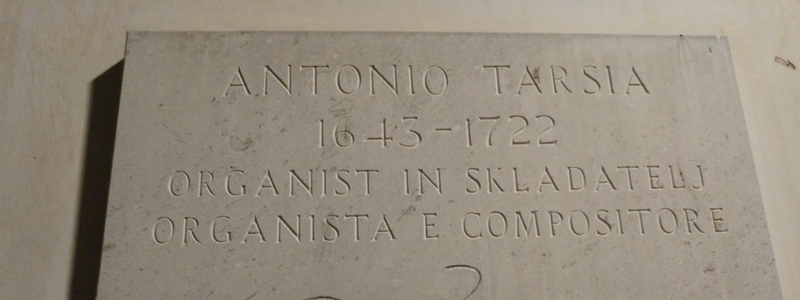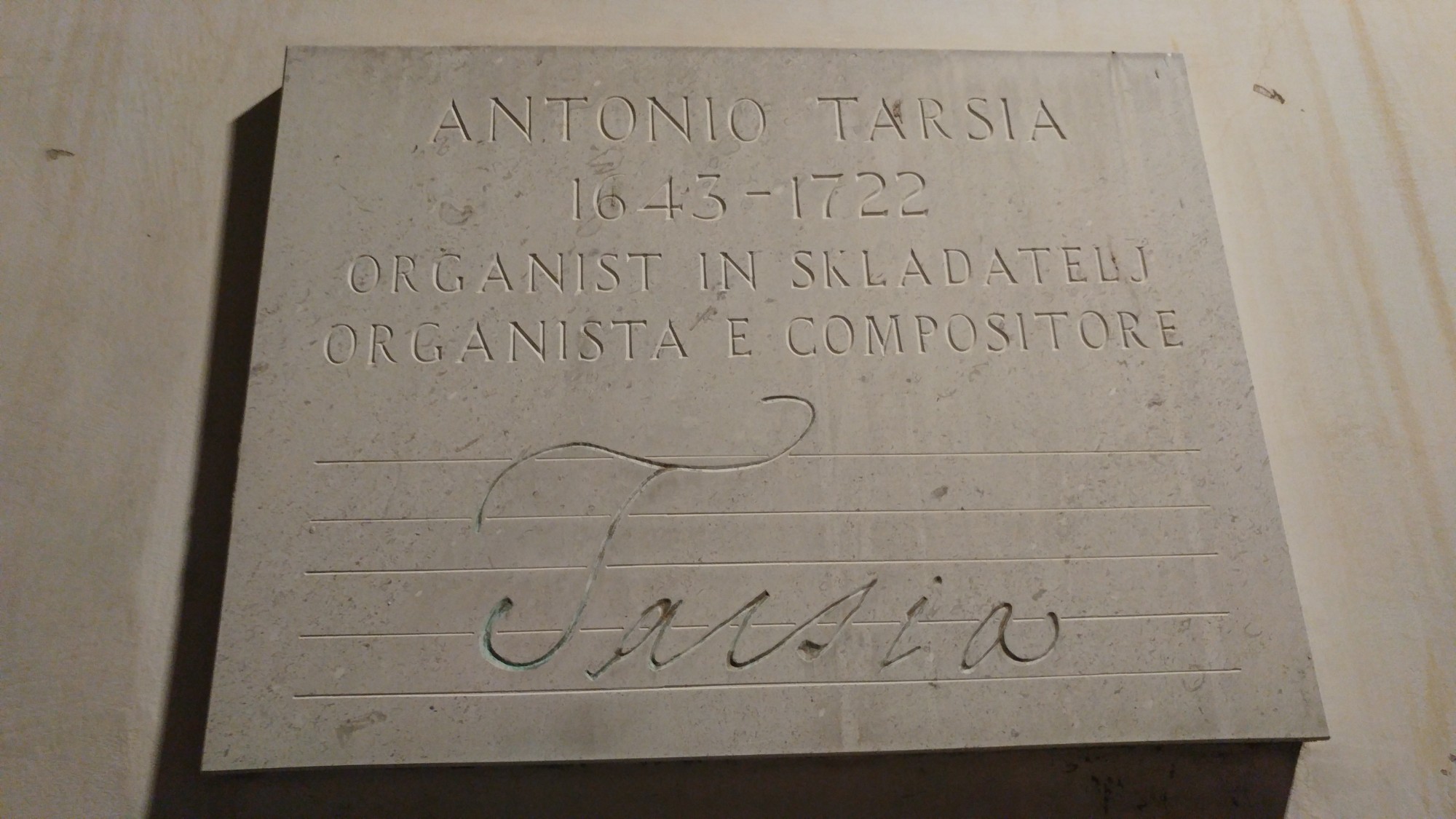In 1993, a memorial plaque was attached to the Palace Tarsia. The plaque was designed by Miroslav Mršnik – Mirč and made by Marmor Sežana. The inscription reads, “Antonio Tarsia 1643–1722, organist and composer. Organista e compositore.”
Antonio Tarsia
Antonio Tarsia (1643–1722) was a Baroque musician, composer and a gem in Koper’s musical past.
Tarsia was born in Pula into an old Koper aristocratic family with its roots in Tuscany. At the age of fifteen, he enthralled worshippers in Koper Cathedral with his vocal skills, departing from a family tradition oriented towards the military and diplomacy. In reaching maturity, Tarsia’s outstanding musical talent far surpassed local musical standards, boosting his professional career; he soon made his mark as a musician, and in 1662 he was appointed organist of Koper Cathedral. He taught music and composed. While attending to his professional tasks, he also transcribed works by seventeenth-century Venetian composers, which left traces in his own work.
Despite Venetian influences, Tarsia was conservative and idiosyncratic in his composing, and was not spurred by the immediate vicinity of other Italian music centres to correspondingly embrace stylistic innovations. He developed a unique Baroque style that contained elements of virtuosic belcanto and the concerto form with a greater flair for tonal texture.
His musical creativity was firmly grounded in religious expression, and had to consider, among other things, the limited abilities of performers. He predominantly wrote pieces for voice, choir and organ accompanied by some strings, scored masses, psalms, antiphons, motets and vespers. Most notable among his early works are Beatus vir and Magnificat that show traces of the Venetian Baroque and its characteristic concerto style (concertato). Prominent examples of Tarsia’s mature, distinctive idiom are the mass movements Credo and Gloria from 1714 and 1717. In his mature period, the composer took a somewhat more modern approach, especially in treating violin and the vocal part that included a ‘dry recitative’ (recitativo secco).
Maia Juvanc

